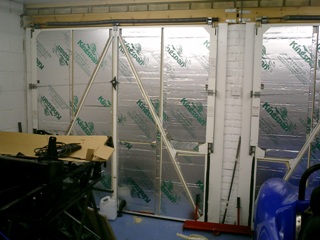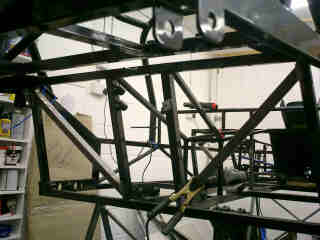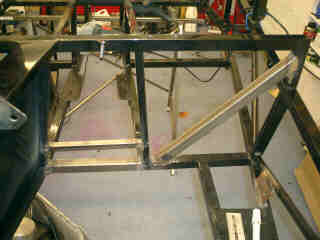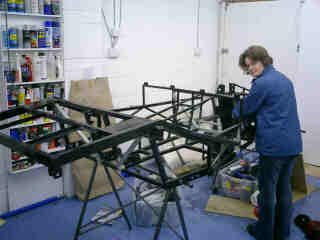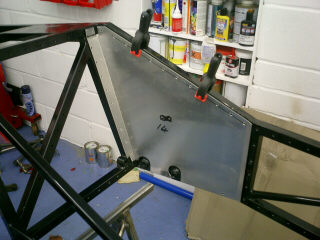Well, over Christmas I didn't actually get that much done on the Fury. Instead I made sure that I'd be nice and warm during the winter months spent hunched over a half-built racer by insulating the garage doors. I got 2 packs of 40mm cavity wall insulating foam from a place in Essex (I was in the area anyway picking up a load of car paint) and stuck it to the inside of the garage doors using silicone sealant.
This was after I'd fitted a pair of Autolock Stoppa door locks (you can just about see them at the bottom of the door in the middle). These are intended to stop someone from bursting the garage door open. They were a total swine to fit and seem to rely on the garage door material being rather more robust than the tin-foil that mine are made from. Still, they may have some kind of a deterent effect...
